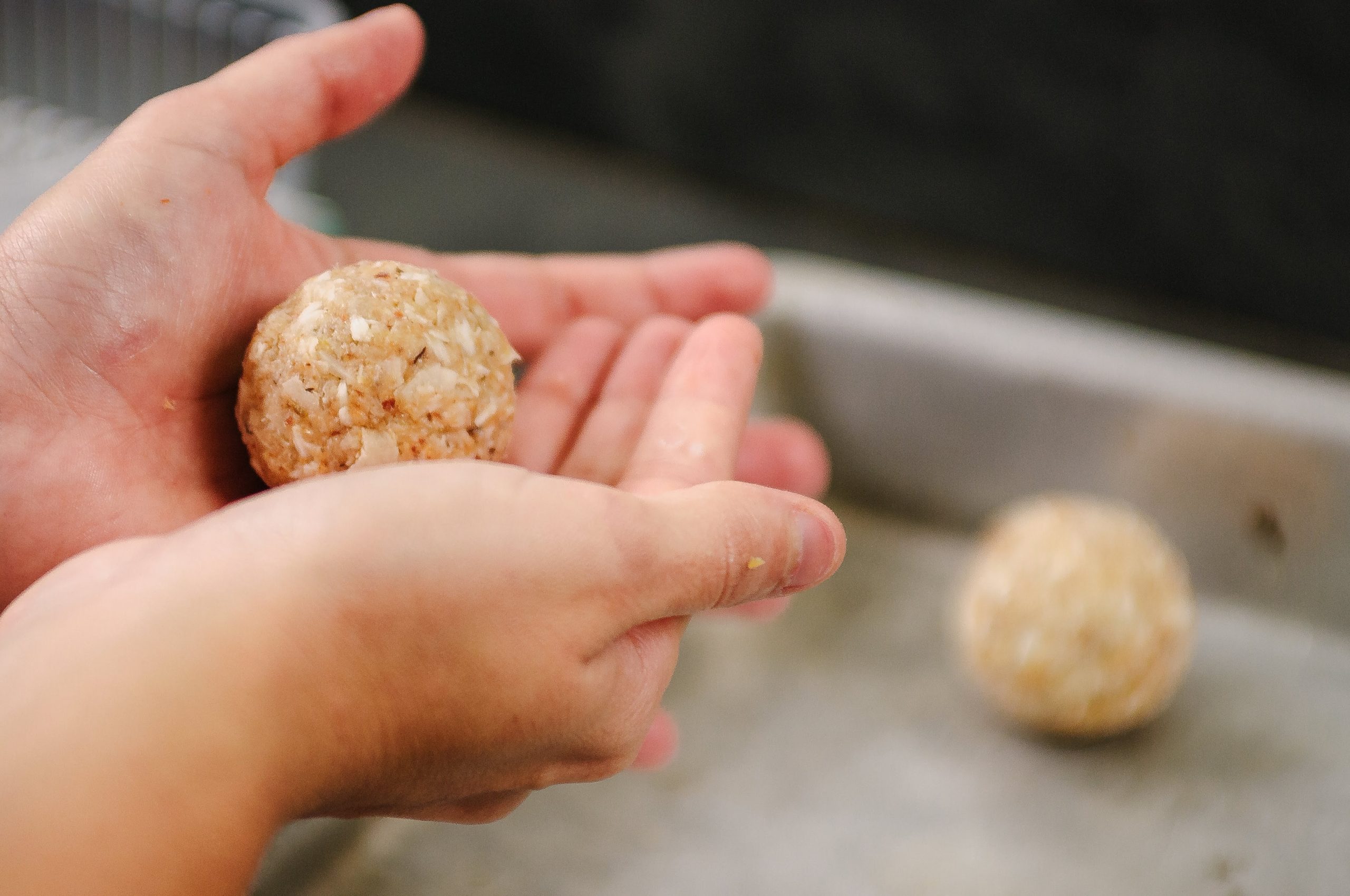Whether trying to keep your meatballs fresh or freeze them for later, you can do some things to ensure they are still moist. In this article, you’ll find all the important information about freezing cooked and raw meatballs, their shelf life, the consequences of identifying and eating sour meatballs, and heating and thawing meatballs. A week’s worth of varied dinners can be resolved by freezing meatballs. You can use a variety of meats and sauces when making meatballs, which gives them versatility. So let’s start!

What are Meatballs?
A little ball of ground meat is formed into a meatball by adding binders and seasonings. The most common ingredients for meatballs are ground beef, ground pork, or ground turkey. Depending on the meatball recipe, the flavor will change. For instance, Köttbulle is Swedish meatballs cooked with ground beef (and occasionally ground pork) along with onions, broth, and breadcrumbs dipped in milk.
The ingredients for American Italian meatballs include ground beef or pork, Italian breadcrumbs, spices, onions, and parmesan cheese. There are many different ways to serve meatballs, including as an appetizer, in sub sandwiches, in slow cooker dishes, baked in casseroles, and boiled in marinara sauce.
How to Freeze Meatballs?
Ling is a fantastic idea. Meatballs can be frozen by cooking, letting them cool, freezing them one at a time, and then placing them all in a freezer bag. Learning to freeze meatballs is a fantastic idea to have them on hand for a quick meal. If you take a few easy measures, freezing meatballs is straightforward, and they freeze successfully.
Step 1. Prepare the Meatballs:
Cooking your meatballs before freezing them is easy. Please make certain to cook them until the internal temperature reaches 160°F. Take them out and let them cool after they reach the 160°F temperature. You could also freeze them uncooked. This method simplifies defrosting, or you can toss the frozen ingredients into your dish and defrost them while you cook.
Step 2. Individually Freeze
Put your meatballs on a baking sheet lined with parchment paper after cooling. To prevent them from sticking together, make sure there is enough room between each one.
Freeze Raw Meatballs: Use a spoon or cookie scoop to portion the meatball mixture into equal-sized meatballs after preparing the meatball mixture per the instructions. Depending on the size of the meatball you desire, select the appropriate cookie scoop size.
Put the meatballs on a baking sheet in a single coat; do not let them come into contact; otherwise, they will stay together when frozen. The night before cooking, defrost the meatballs in the fridge. Freeze until solid. Exchange the meatballs in a freezer bag or freezer-safe sealed container, label them with the type of meatball and the date, and freeze for 1-2 months.
Step 3. Storage in Freezers
Put your frozen meatballs in a Ziploc bag after removing them from the freezer. In the bag, try to arrange them in a single layer. This will make taking them out later much simpler. Sort the meatballs into portions-per-meal-sized bags so I can grab one and defrost what I need. For three to four months, meatballs can be kept in the freezer. This is a fantastic method to prepare certain meals in advance and have them available when you need them.
Some Suggestions for Freezing Meatballs:
- Depending on how big your meatballs are, please put them in the freezer for an hour or two. Once frozen, put them in a storage bag, label them with the date, and store them there until you’re ready to use them.
- Allow your meatballs to cool after cooking them until they register an internal temperature of 160 degrees.
- To prevent them from freezing together, space your meatballs on a baking sheet covered with parchment paper.
- It is much simpler to defrost and incorporate frozen meatballs into a dish if they have already been cooked before freezing. After two hours on high, your frozen meatballs will be thawed in the crockpot with sauce.
- Here are some great uses for your frozen meatballs: Meatball subs, meatball appetizers, and spaghetti with meatballs. There are so many different procedures to serve them.
How to Freeze Cooked Meatballs?
Depending on your recipe, make the meatballs. After you’ve finished cooking them, there are a few easy ways to freeze meatballs. Two Main methods of Freezing Cooked Meatballs: First, Meatballs in the sauce should be prepared by your recipe and cooked until they have a mirror temperature of 160 degrees Fahrenheit. When the mixture is cold to room temperature, put the sauce and cooked meatballs in a freezer bag or glass container if your meatballs were cooked in tomato sauce.
You can simplify meal planning every time you need a fast evening meal and reheat one portion. Running every time you need a fast evening meal and reheat one portion. You can simplify meal planning by dividing your cooked meatballs and sauce into numerous freezer bags. The bags should be m First, line a baking sheet with a rim of parchment paper. Once the cooked meatballs have cooled and attained room temperature, arrange them in a single coat on the baking sheet.
To prevent them from touching, ensure that they are evenly spaced apart. The meatballs should be frozen in all the methods, which should take two to four hours. The frozen meatballs should be put into an airtight freezer bag or another freezer-safe container after removing the baking sheet from the freezer. Refreeze the meatballs after removing them. Meatballs that have been frozen can be kept for up to two months.
How to Keep Meatballs Moist?
Whether you are reheating frozen meatballs or preparing a homemade meatball recipe, keeping the cooked balls moist is important. This can be done by using a combination of water and bread crumbs. This will keep the meatballs moist and tender. You can also add a moisture-retaining ingredient such as milk or vegetable purees. To reheat frozen meatballs, you can use the oven or microwave.
Once the fried balls have reached a mirror temperature of 165 degrees Fahrenheit, they are safe to eat. It would be ideal for making sure that the meatballs are first defrosted. You can carry out this procedure overnight in the refrigerator. Put raw meatballs on a parchment-lined baking sheet before freezing them. Additionally, you could plastic wrap them and place them in an airtight container.
How to Thaw Meatballs?
Take the meatballs’ freezer bag and put it in the refrigerator to defrost. It can take a few hours or all night, depending on the size of the meatballs and how many there are in the bag. Before serving, the meatballs can be briefly reheated in the sauce after being made in advance.
All required to reheat frozen meatballs in the sauce is a quick bake or quick reheat in a skillet over the stove. Over medium heat, bring the sauce and meatballs to a simmer. After a few minutes, reheat the mixture to reheat it. Alternatively, please put them in a baking dish and reheat them at 350 until well heated.
How to Reheat Cooked Meatballs?
It’s easy to reheat prepared meatballs. Put the meatballs on a baking sheet, heat an oven to 350 degrees Fahrenheit, and cook for about 10 minutes. An additional 15 minutes should be added to the cooking time if you’re reheating frozen meatballs.
Reheat the meatballs until they are well heated before serving. Meatballs in the sauce can also be heated by placing them in a pan of simmering sauce on the stove. Meatballs will taste just as excellent whether you reheat them from leftovers or cook them frozen.
How Long do Meatballs Stay Fresh?
They will remain fresh for 3–4 days in the refrigerator with careful storage. They will keep for two to three months if frozen. If you choose to cook them frozen, they should be safe to consume as long as they achieve an internal temperature of 165 degrees Fahrenheit.
The study’s objective was to contrast the effects of synthetic antioxidants and Moringa oleifera leaf extract on beef meatballs. To accomplish this, five different kinds of beef meatballs were developed. Tests were conducted for sensory, physiochemical, biochemical, and microbiological evaluation of meatball quality and safety. Meatballs were kept at -20°C after being prepared. 0t, 15t, 30t, and 60t days apart, analyses were performed.
How Long can you Keep Meatballs in Sauce?
Meatballs can be left in the sauce for a few hours or overnight. Before adding the meatballs to the sauce, it is important to ensure they are cooked. If not fully cooked, they’ll become mushy and unpleasant.
How to Tell if Cooked Meatballs are Bad?
There are a few indicators to check for if you’re wondering whether your cooked meatballs have gone rotten. Check the meatballs’ color first. They’ve gone bad if they’ve gotten a greenish-grey color. A sour or off scent is another indicator of rotten meatballs.
You are discarding your meatballs if they Discardingptoms is advised. Furthermore, cooked meatballs should is advised to be thrown away after more than two hours of room temperature storage. Throwing away your meatballs is usually preferable if you need to check if they’re safe to eat.
What will Happen if you Consume Spoiled Meatballs?
You will probably become ill if you consume sour meatballs. Bacteria will have started to grow on the meat in the meatballs as it has started to degrade. This bacteria can make you sick with food poisoning, causing you to vomit, have diarrhea, and develop a fever. It is advisable to discard sour meatballs rather than consume them.
Conclusion
Freezing meatballs might be helpful if you’re searching for a quick appetizer that you can cook and eat for lunch or supper. Most retailers sell frozen meatballs, but many contain components that are either unhealthy for you or to which you may be allergic. A batch of homemade meatballs can be frozen and taste great for over a month.
Because they can be incorporated into many different dinners, meatball freezes are one of everyone’s favorite dishes. Your meats include chicken, turkey, beef and pork, lamb, and veal. With or without sauce, meatballs can be frozen. To have more freedom to prepare later a sauce that suits my mood, I like to freeze them without the sauce.
